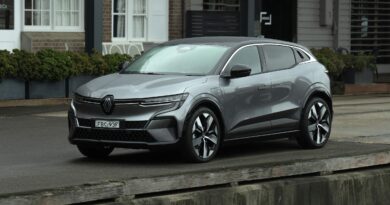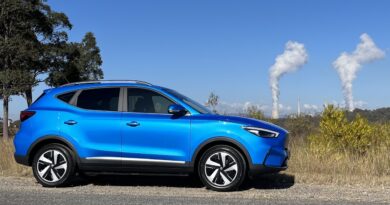2021 Hyundai Nexo hydrogen FCEV review
The Nexo is the first fuel cell electric vehicle (FCEV) certified for sale in Australia. Hyundai has brought 20 to Australia as part of a trial of hydrogen tech.
It is the only fuel cell SUV in the world, so has no direct competitors. But it most closely aligns to the Toyota Mirai, the only other FCEV in Australia.

Fuel cells run purely on hydrogen, which is converted to electricity through a fuel cell. Instead of batteries there are hydrogen tanks, but the electric motors and EV running gear is identical to other electric vehicles.
Value
There’s no price tag on the Nexo because you can’t buy one in Australia. Yet.
Those first 20 cars have been brought here as part of a trial and will initially be loaned to government departments and fleets.

It’s all about learning about fuel cell tech and its relevance and suitability to Australia.
But if it were for sale, the Nexo wouldn’t be cheap. In the US it sells for about US$60K, which would translate to something close to $100K once you do the conversion and pop our taxes on it. That’s about double the price of an equivalent SUV.
Not that there’s a direct comparison to a petrol-powered car or an electric SUV.
The five-seat Nexo is a similar width to popular mid-sized SUVs such as the Toyota RAV4 and Hyundai’s own Tucson, but it’s slightly longer.
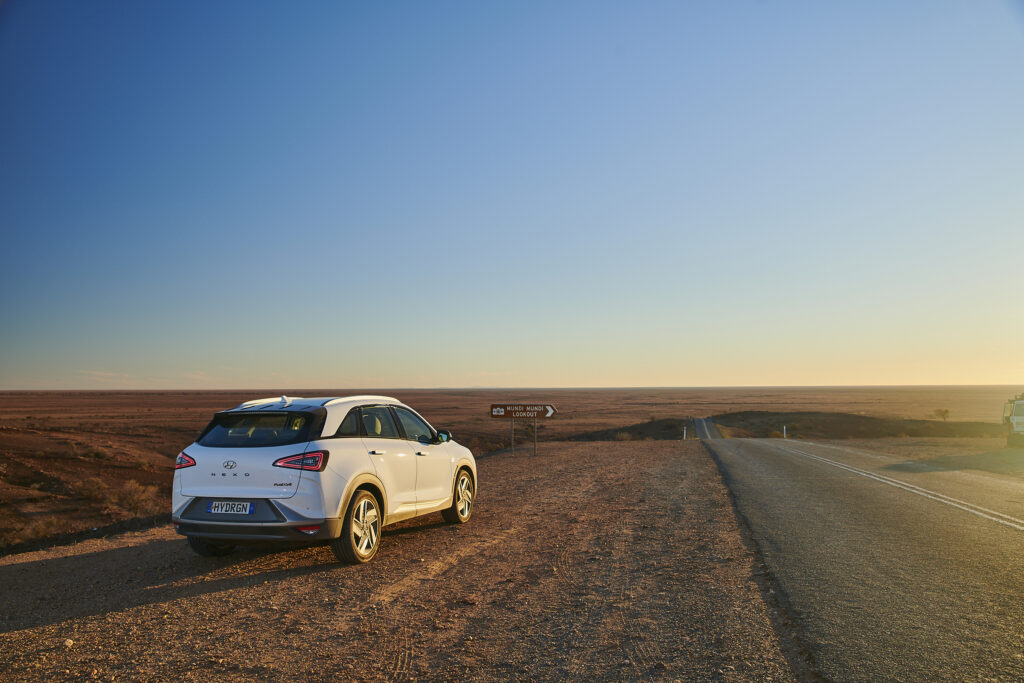
Equipment levels are understandably generous, given the estimated price tag.
There’s a 12.5-inch touchscreen incorporating Apple CarPlay and Android Auto. Beneath the vast floating centre console is a storage pod incorporating Qi wireless charging.
And, like the Santa Fe it can be partially parked remotely.
Inside
In keeping with the environmental theme there’s “vegan leather” (which sounds much more modern than fake leather or vinyl) and “eco-paint” for some interior surfaces as well as “eco fibers on basis of cane sugar used for headliners and floor mats”.

There’s also generous interior space, especially up front. There’s good head and leg room and the central platform that houses all the major controls makes life simple for adjusting the ventilation or infotainment. Only the volume button for the sound system is a decent reach away from the driver, although there are buttons on the steering wheel to take care of that.
Our car had dark blue colour theme, which wouldn’t be my first (or second) choice. The lighter two-tone beige hue (it’s officially “stone and shell grey”) is a better match.

Rear legroom is terrific although head room suffers from the seats sitting relatively high. Occupants are noticeably higher than those up front, although it’s only an issue for six-foot-plussers, whose heads may graze that snazzy eco headliner.
Blame it on the three hydrogen fuel tanks that sit under the rear seats.
At least there’s ventilation and a folding central arm rest to keep comfort levels up.
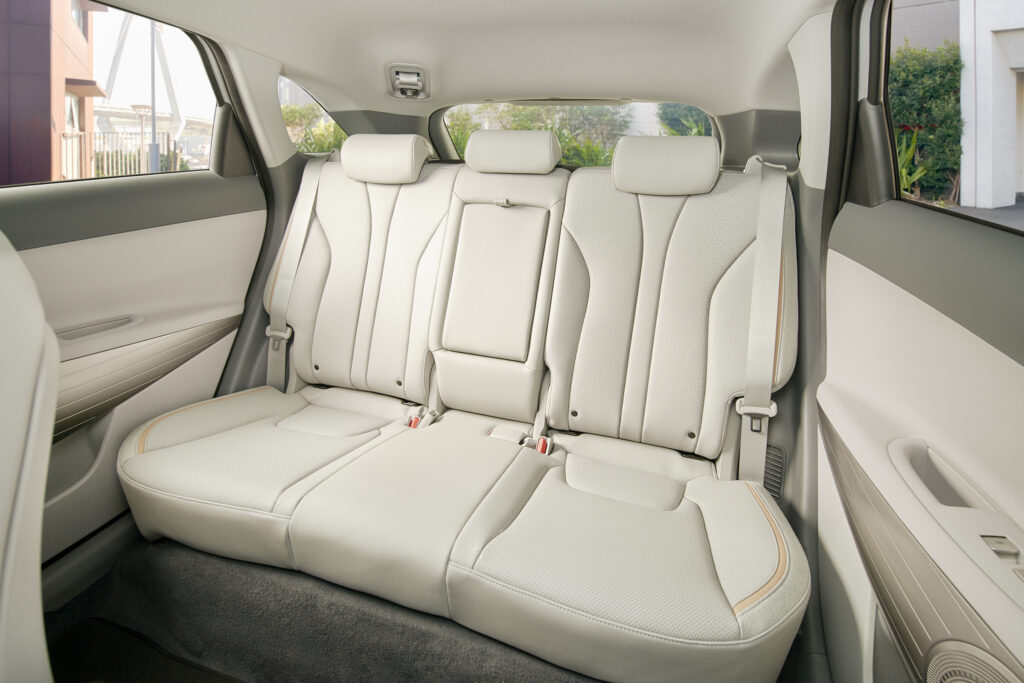
The boot measures 461 litres in capacity or you can have the back seats folded to stretch that to 1466L.
Beneath that boot floor is a small (by EV standards) battery pack as well as a tyre repair kit and storage space for small items.
Performance and efficiency
Pop the bonnet of the Nexo and there’s a familiarity to what you’re looking at – visually at least.
Except under the plastic cover is not an engine but the fuel cell, which is the thing that creates electricity. Feed hydrogen and oxygen into it and a chemical reaction results in electricity, which can either be used immediately or stored in the small battery pack.
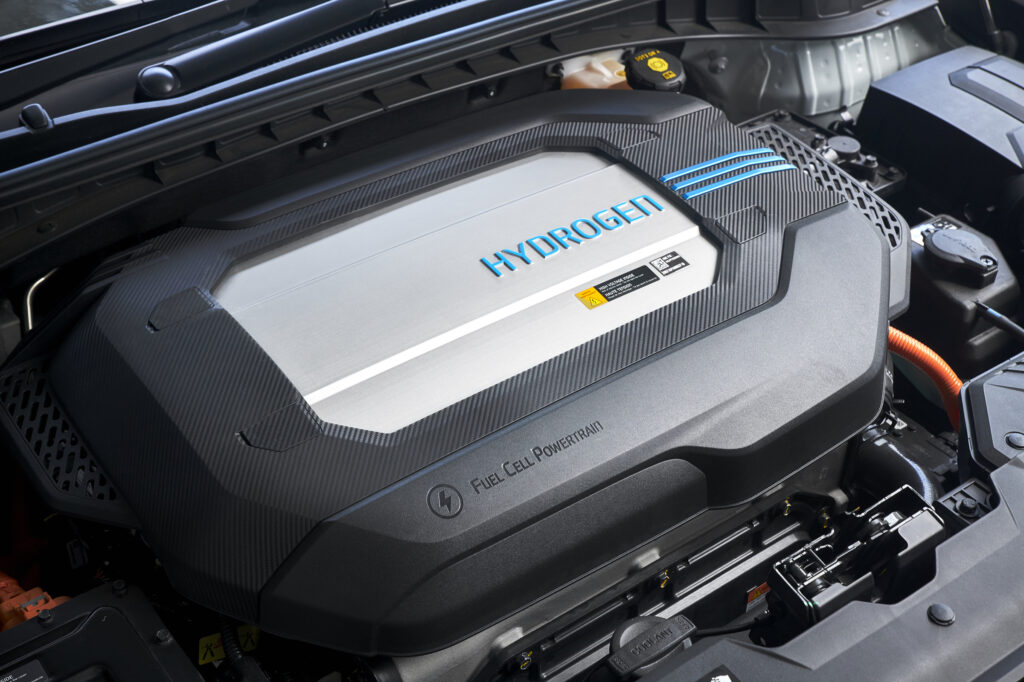
Underneath the fuel cell is an electric motor powering the front wheels.
That single electric motor is a familiar bit of kit: it’s the same one used in the Kona Electric, making 120kW and 395Nm. It drives through a single-speed reduction gear transmission.
At more than 1.8 tonnes the Nexo is no featherweight, yet the generous and easily accessible torque means it marches away from a standstill smartly.
The dash to 100km/h is claimed to take 9.2 seconds and it’s towards triple figures where the early initially hearty acceleration loses some of its fire.
Sure, it’ll easily hold freeway speeds – the claimed top speed is 179km/h – but the weight plays more of a role in dampening the excitement at higher speeds.
But the big trick with a hydrogen fuel cell is how far it can travel between refills. Keep reading…
Charging (or H2 refueling…)
The Nexo can hold 6.33kg of hydrogen, which is enough for a claimed 666km of driving.
We didn’t travel anywhere near that far, but during our half-day of driving the car was using 1.0kg/100km, suggesting that overall target is within range. A later drive in mainly rural conditions – typically 80-110km/h) reduced that efficiency slightly, the consumption stepping up to 1.2kg/100km. But you can still comfortably expect 550km-plus from full tanks.
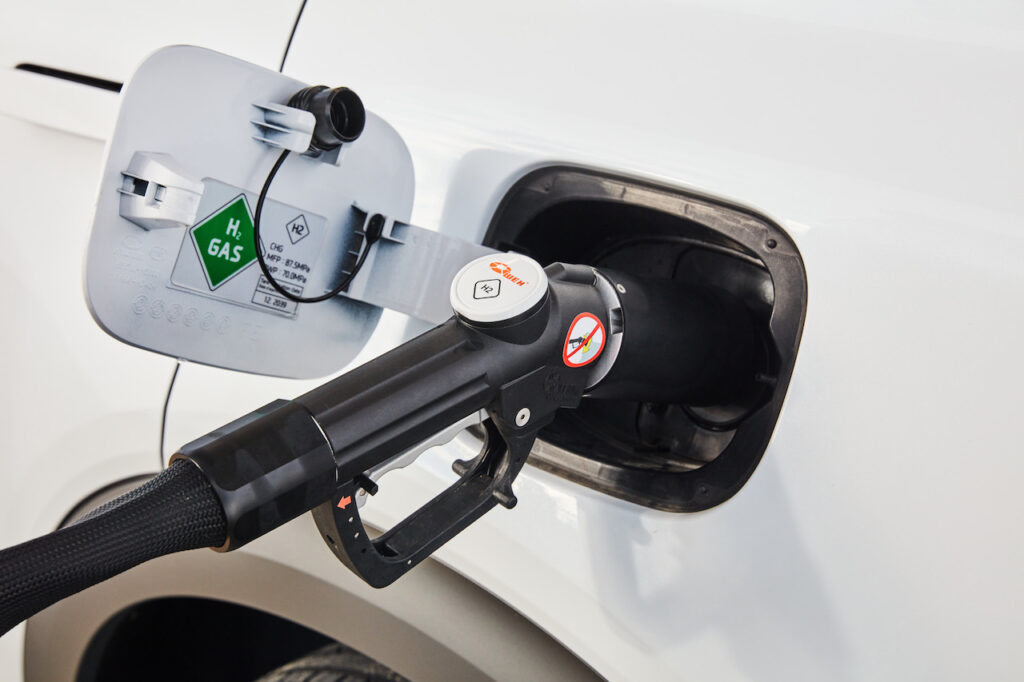
Not that you can go driving off into the sunset. There are only a handful (literally) of hydrogen stations either being developed or recently opened in Australia as well as a refueler at Hyundai’s head office in Sydney.
So any trip needs to be carefully planned to ensure you’ll make it to that next refueller.
Once there, refuelling is similar to a petrol car. Plug in an industrial nozzle, lock it to the car and the hydrogen should start flowing. The total refuel time takes around three minutes.
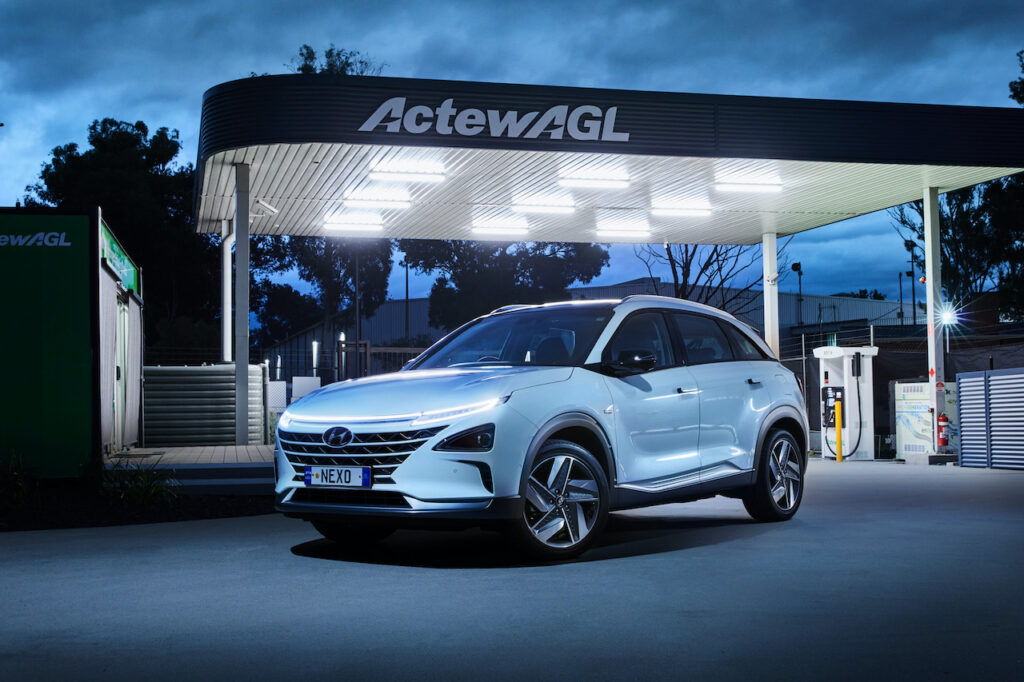
The refueler is like a cross between LPG and petrol systems. The large collar slides over the smaller nozzle and locks it in place to hold it tight while hydrogen flows.
As for the onboard battery, it’s fairly small by EV standards, at just 1.56kWh. And it can’t be charged externally, only by the hydrogen fuel cell.
Ride and handling
The biggest difference between the Nexo and battery electric vehicles is where its weight sits.
Whereas a BEV places the batteries – and so much of the weight – way down low in the floor, the Nexo FCEV has more weight up high; the fuel cell and even the small battery pack in the boot.
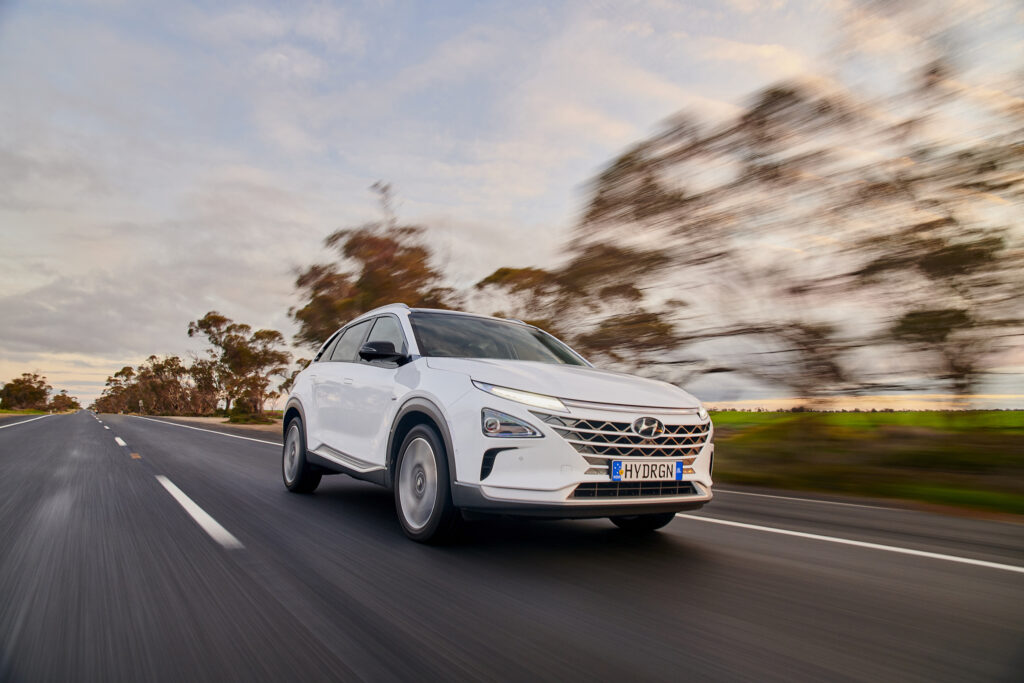
So its cornering behaviour doesn’t quite have that same planted feel of some EVs, instead leaning a fraction more in corners.
But it’s generally well behaved, albeit with the emphasis more on getting the job done rather than raising the hairs on the back of your neck.
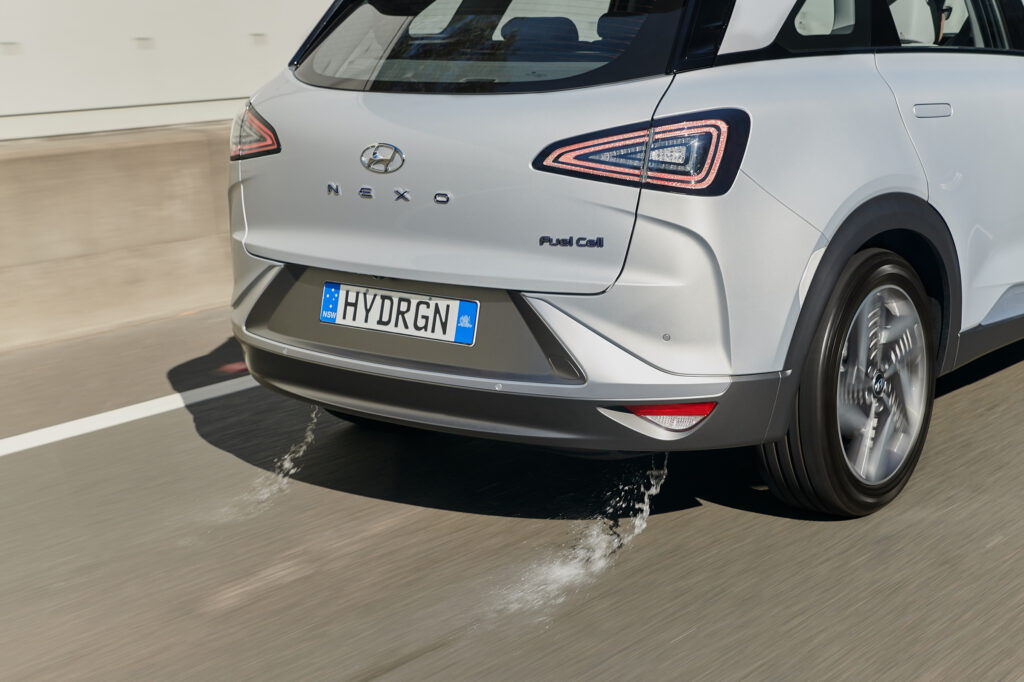
Riding on 19-inch Hankook tyres there’s respectable grip although some extra enthusiasm into a roundabout or tightening corner reaches their limits.
The ride tends towards comfortable although some sharp edges on bumps can jar into the cabin.
Nexo party trick
Running purely on hydrogen makes the Nexo clean and green. There are still exhaust outlets cleverly hidden beneath the rear of the car, but instead of noxious gases it only emits water and oxygen (see image above).
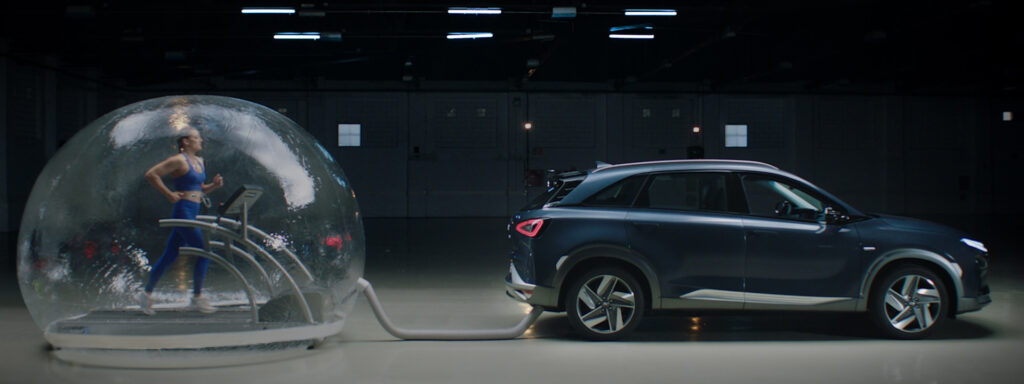
In 2019 Hyundai demonstrated the clean emissions by getting Spanish Olympic champion Mireia Belmonte to train in a plastic bubble that was attached to the Nexo’s exhaust outlet, which was only emitting oxygen and water vapour
Safety
The Nexo gets Hyundai’s latest SmartSense active safety systems including a 360-degree camera, blind spot warning and autonomous emergency braking (AEB).
But it’s the highly pressurised hydrogen many are concerned about.
As well as being able to store hydrogen (at up to 700 bar, or 1000psi), the hydrogen fuel tanks are also built for safety. Each cylindrical tank is made of thick carbon fibre and placed beneath the rear seats, where they’re least likely to be damaged in an impact.

And Hyundai has conducted extreme testing to ensure the safety of the hydrogen system.
According to Hyundai: “When a bullet penetrates a hydrogen tank, it does not explode. Instead, hydrogen leaks out through the bullet hole. In a standard collision test, not even a tiny amount of hydrogen was detected because none had leaked out. Even when Nexo is on fire, a number of safety devices prevent hydrogen from catching fire. Similarly, a hydrogen tank explosion is prevented by quickly releasing hydrogen from the tanks.”
In 2018 the Nexo received a five-star Euro NCAP rating.
Verdict
The Nexo is a thoroughly normal EV and one that showcases the benefits of hydrogen fuel cell technology.
There are obvious issues for now, the most notable of which is a lack of refuelling stations.
But the foundations have been set for hydrogen, a tech many believe has big applications for Australia.
Toyota is another brand working on hydrogen fuel cells and it’s the diesel-powered applications – such as HiLux and LandCruiser – that could work best for FCEVs.
Either way, expect to hear plenty more about hydrogen EVs in the future.
Hyundai Nexo specifications
Price: NA and not for sale, but somewhere around $100K
Basics: FCEV,5 seats, 5 doors, SUV, FWD
Range: 666km
Hydrogen capacity: 6.33kg
Battery capacity: 1.56kWh
Battery warranty: NA
Hydrogen consumption: 1.0kg/100km
Motors: 1 front 120kW/395Nm
AC charging: NA
DC charging: NA
0-100km/h: 9.2 seconds



